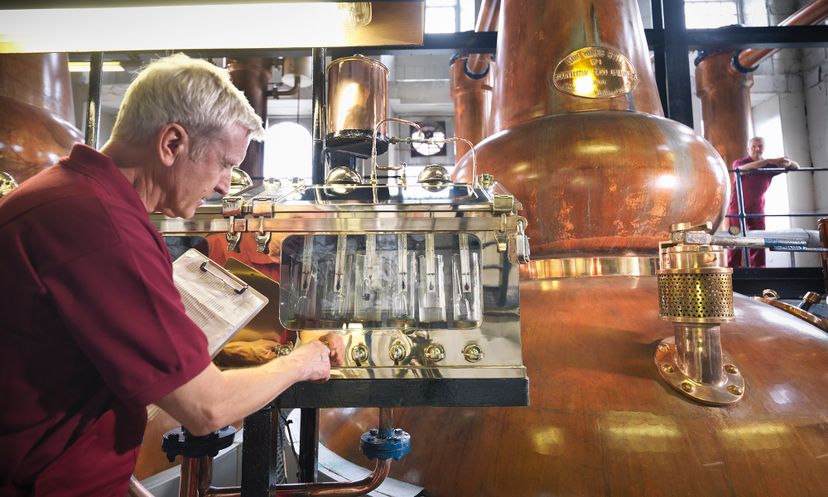
About This Quiz
Booze, hooch, devil's brew. Whatever name you call it, alcohol is really just a combination of carbon, hydrogen and oxygen molecules. Test your knowledge of this simple compound with our quiz!As a rule of thumb, the average person can eliminate 0.5 ounces (15 milliliters) of alcohol per hour. So, it would take approximately one hour to eliminate the alcohol from a 12-ounce (355-milliliter) can of beer.
Alcohol is less dense than water and evaporates at a lower temperature, which allows it to be distilled.
The type of alcohol found in alcoholic beverages is ethyl alcohol (or ethanol), made up of carbon, hydrogen and oxygen.
Advertisement
Champagne usually contains 12 percent ethyl alcohol, while beer has 4.5 percent and wine has 11 percent.
At 0.35 to 0.5 percent BAC, a person may become unconscious and their heart rate could slow, possibly leading to coma or even death.
Alcohol affects various portions of the brain, beginning with the cerebral cortex. The cerebral cortex manages perception, judgment and speech. As the BAC increases, more areas of the brain are affected.
Advertisement
The brain's limbic system, which controls emotions and memory, consists of structures like the hippocampus and septal area. As alcohol affects this system, the drinker is subject to exaggerated states of emotion, like anger, aggressiveness, withdrawal and memory loss.
Although alcohol increases blood flow toward the skin and may momentarily give you a warming sensation, it actually causes you to lose body heat.
In the United States, approximately 8 percent of people ages 18 and older suffer from alcohol abuse and/or dependency. This abuse or dependency costs about $1.7 billion in medical treatment, lost earnings, casualty damages and criminal/legal costs.
Advertisement
Sperm production in males actually decreases because of the decreased sex-hormone secretions from the hypothalamus and pituitary glands and, possibly, the direct effect of alcohol on the testes.
The lungs exhale 5 percent of alcohol. This can be detected by a breathalyzer.
As your blood alcohol concentration level increases, sexual behavior increases, but sexual performance declines.
Advertisement
Alcohol increases the blood flow to the skin. This causes sweating and a drop in body heat.
Alcohol cannot dissolve in fat tissue.
The oxidation, or breakdown, of ethanol occurs in the liver by an enzyme called alcohol dehydrogenase.
Advertisement
When the body becomes more tolerant to alcohol the body increases the liver’s enzymes, which break the alcohol down faster. The body also increases brain activity.
The cerebellum controls fine movements, so if it's not functioning properly, the smooth motion of bringing your finger to your nose would be shaky or jerky.
Alcohol absorption depends upon the following things: concentration of alcohol in the beverage, the level of carbonation in the beverage and the amount of food in your stomach.
Advertisement
A person can die with a BAC over .50 percent.
The chemical combination of oxygen and carbon monoxide produces carbon dioxide, not alcohol. Alcohol can be made by fermentation, fossil fuels and the combination of hydrogen and carbon monoxide.